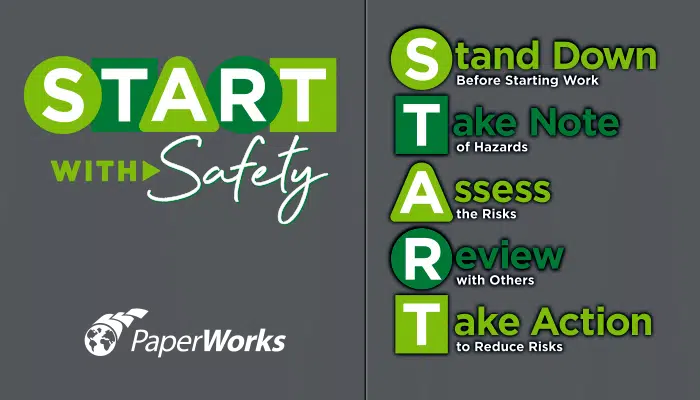In day-to-day life, we all develop our own routine. This routine can be simple or unique. I’d like to say that my morning day-to-day routine is simple. I wake up in the morning, immediately jolt for the coffee pot, get dressed, brush my teeth, start my car, and head to work. Too often, as we develop these routines and execute them daily, we can begin to function on autopilot mode. In other words, we can become complacent.
Complacency can be dangerous in day-to-day life. On your daily commute, for example, you might drive in an area where it may be socially accepted to drive faster than the speed limit. As you continue to pursue this behavior on a daily basis, you may view it as normal, and you may start to feel comfortable with speeding. However, we all know speeding is dangerous and often puts us in a reactive mindset and not a proactive one. Unfortunately, complacency is not exclusive to our day-to-day routines. This type of behavior festers in many environments, including the workplace, where it can be devastating. On one level, complacency in the workplace could mean working like a robot, the steps and tasks we complete begin to feel automatically regulated and fixed. On another level, it could mean feeling comfortable, and this type of complacent behavior can be lethal. Fortunately, this type of behavior is also preventable – in and outside of the workplace. Let’s start with the basics.
Complacency is the feeling of being comfortable and confident, while also being unaware to hazards and risks3. Complacent behaviors can manifest in our day-to-day routines, they come in many forms and have the potential to affect our mental health. An example of this is self-awareness, which is our ability to dive into how we feel, think, and act4. While in autopilot mode, it can be hard for us to consider our overall feelings and thoughts. Once we begin to ignore our feelings and stop taking the time to consider them, we put our mental health at stake. Fortunately, becoming more self-aware can be as simple as taking a step back. It can begin with focusing on our strengths, allowing us to understand what we do best. Subsequently, by recognizing our strengths, we also build our self-esteem around tasks in which we excel, making it easier to problem-solve and complete tasks.
Complacency can also impact our behavior in the workplace and our overall self-awareness. In addition to that, it can also affect our situational awareness. According to EHS Insight Resources1, situational awareness is the act of being present in the moment and alert to our surroundings; it entails being aware of what we are doing and where we are, physically (e.g., body placement) and mentally (e.g., though process). Simply put, lacking situational awareness in our work environment can have devastating results. It can result in rushing through tasks, which then makes us more likely to take a shortcut, which then ultimately makes us more susceptible to putting ourselves in the line of fire and injuring ourselves. In the manufacturing industry, Line of Fire (LOF) refers to job tasks or work environments that put workers in harm’s way, and it can have tragic outcomes. According to data provided by the Bureau of Labor Statistics, 17% of all workplace deaths are a result of being in the line of fire2. Lacking situational awareness also increases the likelihood of injuring a fellow coworker or damaging equipment and/or property.
Similar to combating complacency in our personal lives, combating complacency in the work place and promoting situational awareness is achievable. One effective way to achieve this is to discuss hazards and their associated risks with our fellow coworkers. For example, have a conversation with coworkers about lifting safely. By communicating with our team about the ergonomic hazard of lifting something too heavy, and the potential risk of a back injury, we are keeping them educated. By closing the gap and training on how to approach the task, we are keeping them safe. At PaperWorks, we like to achieve this by following the START process. The START process entails Standing down, Taking note of potential hazards, Assessing, and evaluating hazard risks, Reviewing hazards and risks with others, and Taking action to reducing risks. By following the START process, we allow ourselves to take a step back to prevent rushing. We identify hazards, assess them, and communicate so everyone is aware. Most importantly, we are taking action to reduce those risks to keep ourselves and our fellow Team Members safe.
In sum, it is common for us all to have our own day-to-day routines. They may be simple, or unique; however, they share a common theme. This common theme is complacency. In our personal lives, complacency can negatively impact our self-awareness. This can result in our inability to reflect on our thoughts, interactions, and how we feel. This can be alleviated by focusing on our strengths. Furthermore, complacency also impacts how we operate in the workplace by way of situational awareness. By being complacent, potential workplace hazards are missed. Like complacency and self-awareness in our personal lives, we can also combat complacency and promote situational awareness by communicating. For us at PaperWorks, we take situational awareness very seriously and face it head-on by following the START process!

1 EHS Insight Resources (2021). An Introduction to Situational Awareness. Retrieved June 26, 2023, from An Introduction to Situational Awareness (ehsinsight.com)
2 LaDuke, P. (2013). Working in the Line of Fire. Retrieved June 26, 2023, from Working in the Line of Fire (safetyrisk.net)
3 Merriam-Webster. (n.d.). Complacency. In Merriam-Webster.com dictionary. Retrieved June 26, 2023, from https://www.merriam-webster.com/dictionary/complacency
4 Morin, A. (n.d.). What is self-awareness? Retrieved June 26, 2023, from Self-Awareness and Learning Differences (understood.org)





